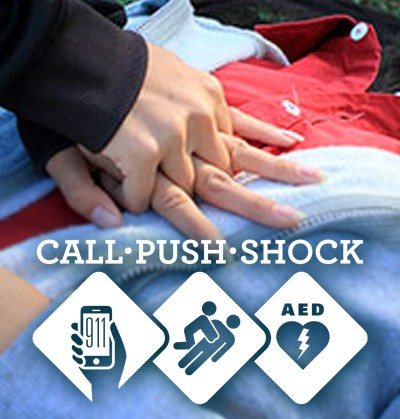
Emory University is joining researchers at 20 other hospitals across the country to conduct a study called ACCESS. The co-principal Investigators are Demetris Yannopoulos, MD, of the University of Minnesota and Tom Auferheide, MD, of the Medical College of Wisconsin.
Emory has asked the Sudden Cardiac Arrest Foundation to share information about the study with the Sudden Cardiac Arrest Network, its community of survivors, family members and others, to find out what they think about the study. Community members are invited to take the survey at this link. Responses are due by May 7th.
About ACCESS
ACCESS is a clinical research trial that aims to compare two current treatment methods that are used to care for patients who have had a cardiac arrest (their heart has stopped beating) but now have been resuscitated (their heart has restarted). In some patients, the first heart tracing/picture (EKG) done after resuscitation clearly suggests that the cardiac arrest was caused by a blockage of a heart artery; in these cases (30%), the patients usually go immediately to the cardiac catheterization laboratory (CCL) to see if the blockage can rapidly be relieved and blood flow to the heart muscle restored.
In other patients (70%) the first heart tracing (EKG) may not show a blockage; some experts think these patients still may benefit for immediate CCL, while others experts believe that these patients should first be stabilized in the Intensive Care Unit (ICU) to be considered later for the CCL. Researchers want to compare these two treatment methods to see if one or the other benefits patients more.
Patients who have suffered a cardiac arrest cannot give their personal consent to be in a research study when they arrive in the emergency department because they are unconscious after the cardiac arrest. Because of this, Emory researchers are asking community members to think about this research and share your opinions about conducting the research.
Everyone eligible for ACCESS will be randomly assigned to receive treatment for his or her condition in either the CCL or the ICU. Random means assigned by chance, like the flip of a coin. Other than initial randomization, treatment and care will be the usual care provided at the discretion of the treating clinician.
In the cardiac catheterization laboratory (CCL), a test called a Coronary Angiography is performed that uses dye and special x rays to show the insides of your coronary arteries. This test often is done during a heart attack to help find blockages in the coronary arteries. If the doctor finds a blockage, he or she may recommend a procedure called percutaneous coronary interangioplasty (PCI) to eliminate the blockage and restore blood flow through a blocked artery. Sometimes a small mesh tube called a stent is placed in the artery to help prevent blockages after the procedure. In the intensive care unit (ICU) patients with no EKG blockage are often treated with:
- IV and oral drug therapy and fluids
- Supplemental oxygen
- Close monitoring
Patients may go to the CCL later after being in the ICU if their condition is more stable, or their doctor may decide not to send them to the CCL at all. Direct admission to the ICU is what is most often done in many hospitals across the nation.
See clinical trial summary here.
For more information, contact nick.m.ciaravella [at] emory.edu (Nick Ciaravella), Clinical Research Coordinator Emory Emergency Neurosciences.
